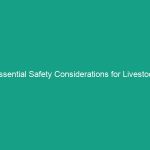Good Morning Team!
Today, we’re focusing on an essential aspect of Workplace Safety: Eye Wash Station Maintenance. This talk is crucial because eye wash stations are a first line of defense against eye injuries that can occur in our work Environment. Understanding how to maintain these stations ensures that they are fully operational and accessible when needed. Let’s dive into why this topic is essential for our Safety and well-being.
Understanding Eye Wash Station Maintenance
Eye wash stations are specifically designed to provide immediate flushing of the eyes in the event of exposure to hazardous substances. Proper maintenance of these stations ensures that they function correctly and are readily available for use. Many employees might think that these stations are only necessary for specific jobs or tasks, but the truth is that eye injuries can happen unexpectedly, and every workplace should be prepared.
Key Hazards, Risks, and Safety Considerations
Ignoring eye wash station maintenance can lead to serious consequences:
- Inoperable Stations: If a station is not properly maintained, it may not function when needed, delaying critical treatment.
- Contaminated Water Supply: Stagnant water can become contaminated, posing additional risks to eye health.
- Accessibility Issues: If stations are not easily accessible, employees may not be able to reach them in time, increasing injury severity.
These Hazards highlight the need for regular inspections and maintenance of eye wash stations. The real-world consequences of neglecting this aspect of safety can lead to severe eye injuries, loss of vision, and even legal repercussions for the company.
Best Practices, Procedures, & Actionable Advice
Here are some Best Practices for eye wash station maintenance:
1. Regular Inspections
Conduct weekly inspections of all eye wash stations. Check for:
- Clear signage indicating the location.
- Accessibility and obstruction-free pathways.
- Cleanliness of the area around the station.
- Proper functioning of the flushing mechanism.
2. Flushing Procedures
Eye wash stations should be flushed for at least 15 minutes in the event of an emergency. During regular maintenance, stations should be tested to ensure they flow at the correct pressure and temperature.
3. Water Quality Checks
Ensure that the water supply is clean and free of contaminants. If water is stagnant, it should be flushed out regularly to prevent bacterial growth.
4. Employee Training
All employees should be trained on how to use the eye wash stations effectively. Training should include:
- Location of eye wash stations.
- Proper flushing techniques.
- When to seek additional medical help after using the station.
5. Documentation
Keep a log of inspections, maintenance performed, and employee training sessions. This documentation is critical for compliance and can help identify patterns in maintenance needs.
Regulations, Standards, and Compliance
Compliance with OSHA Regulations is crucial for Workplace Safety. osha Standard 1910.151(c) mandates that “where the eyes or body of any person may be exposed to injurious corrosive materials, suitable facilities for quick drenching or flushing of the eyes and body shall be provided within the work area for immediate emergency use.”
Failure to comply with these regulations not only puts employees at risk but also exposes the company to legal liabilities. Regular maintenance and training ensure we meet these Standards and protect our workforce.
Employee Engagement & Discussion
Now, let’s discuss. Have you ever had to use an eye wash station? What challenges did you face? How do you think we can improve our safety practices related to eye wash stations? Your feedback is invaluable, and sharing experiences can help us all learn and stay safe.
Conclusion & Key Takeaways
In summary, maintaining eye wash stations is a vital component of Workplace Safety. Regular inspections, proper flushing procedures, ensuring water quality, employee training, and thorough documentation are all essential practices. By prioritizing these actions, we create a safer work environment for everyone.
Thank you all for your attention and commitment to maintaining a safe workplace. Remember, safety is everyone’s responsibility, and together we can significantly reduce the risks we face daily. Let’s continue to prioritize safety in all that we do!


